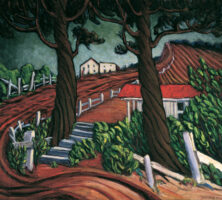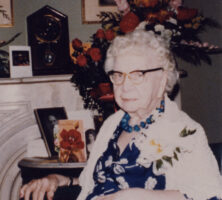Nell Choate Jones, a Georgia native, embarked on an artistic career when she was in her forties, and she spent the rest of her long life painting, exhibiting, and sustaining an active involvement in the arts and in women’s organizations.
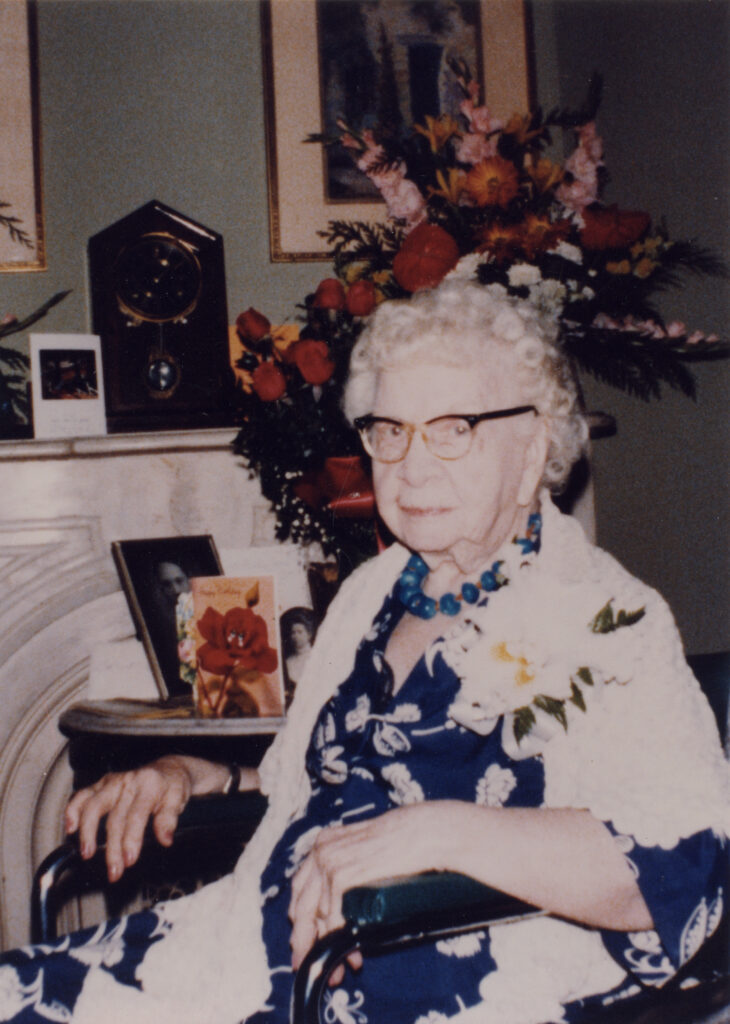
Courtesy of Mrs. Thomas S. Potts
Born in Hawkinsville, in Pulaski County, on May 27, 1879, Nell Hinton Choate was the daughter of Sarah Cornelia Roquemore and James Dearborn Choate, who served in the Confederate army during the Civil War (1861-65). (She was also a distant relative of Nell Choate Shute, the first wife of artist Ben Shute.) Nell was four when her father died, and the family then moved to Brooklyn, New York. Educated at Adelphi Academy in Brooklyn, Jones was a kindergarten and elementary school teacher in the New York public school system. Upon her retirement from teaching, and with the encouragement of her husband, the artist Eugene A. Jones, she established a second career as an artist.
Jones began painting the flowers and landscape of Prospect Park, near her home in Brooklyn. She also studied in Europe and in the summer artists’ colonies that the couple frequented. Although she had left her native Georgia as a young child, Jones considered herself a southerner, and she ultimately returned to the region of her birth for much of her artistic inspiration. Her approach to painting evolved from early impressionistic landscapes into an expressionistic, vividly colored, and simplified style that may be best described as American Scene painting of southern subjects.
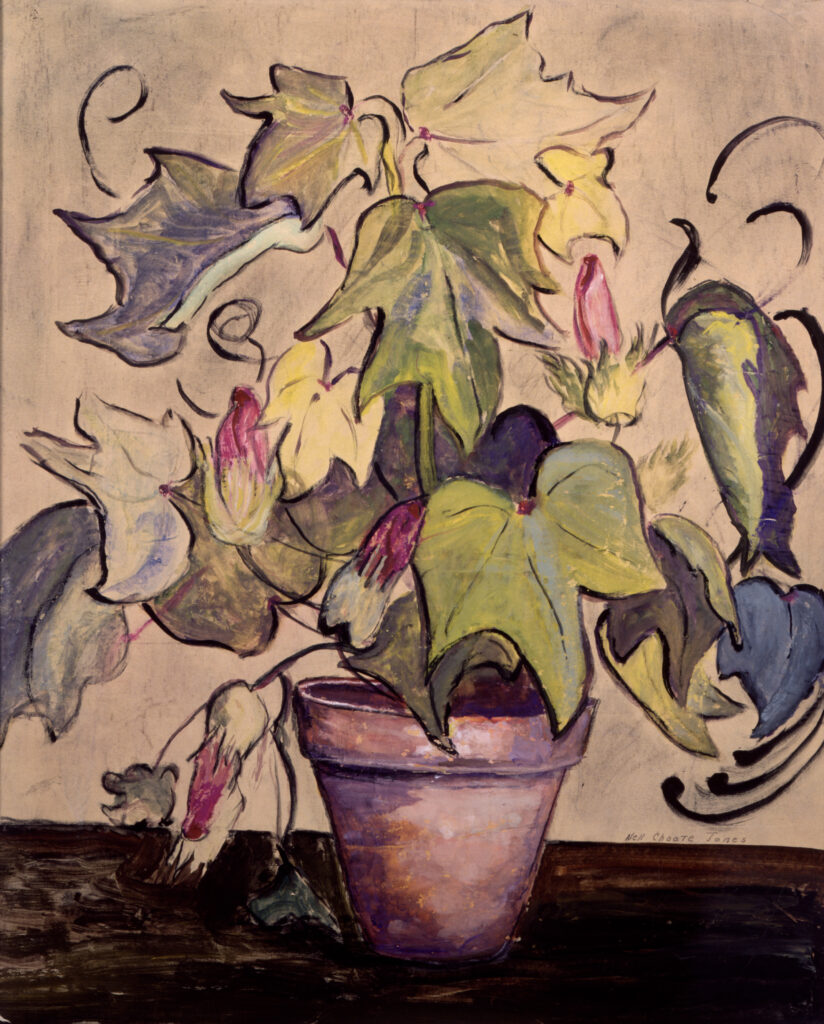
Courtesy of Morris Museum of Art
In 1925 three of her paintings were exhibited in Atlanta at the annual exhibition of the Southern States Art League. This regional organization, formed to promote the art and artists of the South, held annual exhibitions between 1921 and 1947. Less than two years later, she and her husband exhibited work at the Holt Gallery in New York City. In 1929 she was awarded the first of two scholarships to attend the Fontainebleau School of Art in France, and she later traveled to England for additional study. During this early period her teachers included Frederick J. Boston, John F. Carlson, Benjamin Eggleston, and Ralph Johonnot. In addition the couple spent summers at the artists’ colonies of Woodstock, New York, and Old Lyme, Connecticut, and also visited Bermuda and Santa Fe, New Mexico.
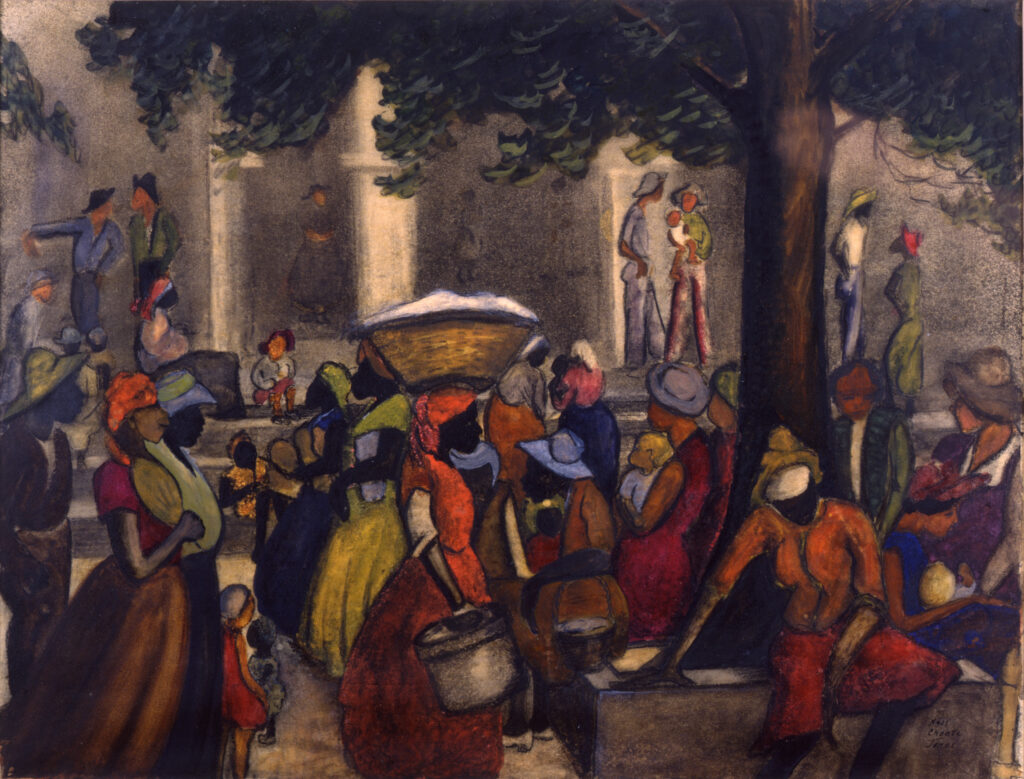
Courtesy of Morris Museum of Art
In 1936 Jones returned to Hawkinsville for the burial of her sister, Coralie, in the city cemetery where her parents and brother, Walter, were interred. After that she traveled to Georgia periodically, capturing the lush rural landscape and the leisure activities of African Americans, who were frequent subjects in her work.
Jones exhibited actively from 1925 until 1979 in museums and galleries in the United States, Canada, and Europe. Among the highlights of her career were the inclusion of her work at the 1939 New York World’s Fair; her 1945 solo exhibition of Georgia scenes at Argent Galleries in New York, the headquarters of the National Association of Women Painters and Sculptors; and her exhibitions at the Brussels World’s Fair in 1958, the National Academy of Design, and the New York Watercolor Society.
Despite a demanding exhibition schedule and frequent trips to the South, Jones also assumed a leadership role in numerous art organizations. In 1975 she was named Woman of the Year by the National Association of Women Artists, and in 1979 the Brooklyn Museum honored the centenarian with the Distinguished Citizen Award.

Courtesy of Morris Museum of Art
Jones, through philanthropic gestures, helped to bring American art to her home state. In 1941 she corresponded with Martha Berry, the founder of Berry College in Rome, concerning the donation of paintings by prominent American artists to start an art museum at the college. Jones made a personal donation of more than a dozen paintings the following year. In 1979 she donated nineteenth-century portraits of her parents to the Pulaski Historical Commission, the county historical society located in Hawkinsville.
Jones died in Brooklyn on April 15, 1981. During the final years of her life she was in failing health, and her neighbors, the Price family, cared for the artist in their home. After her death, they placed her ashes in the Georgia clay of the Hawkinsville city cemetery.










